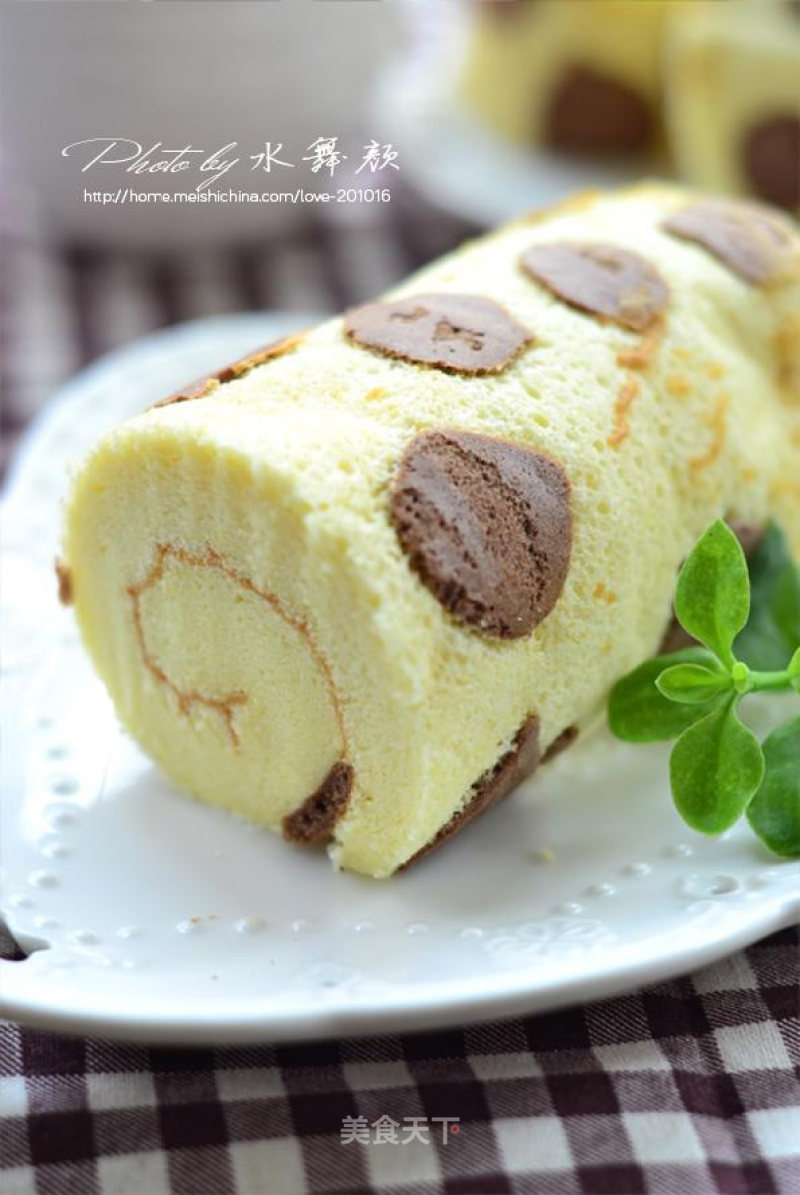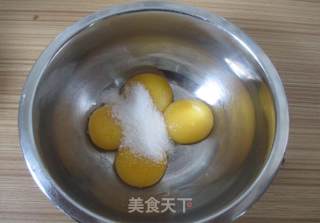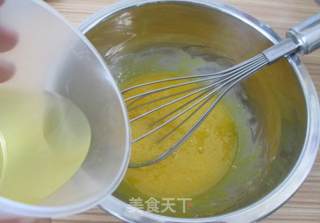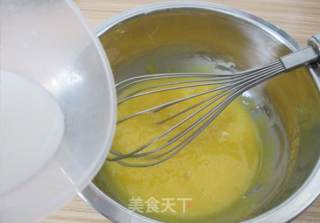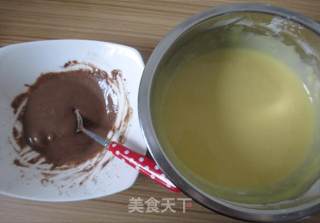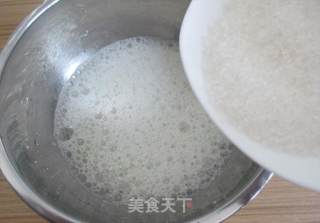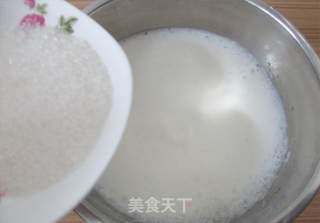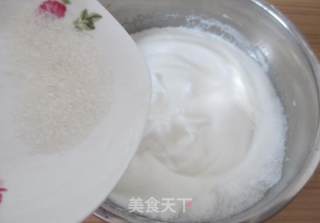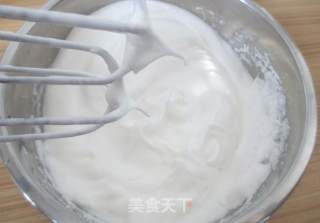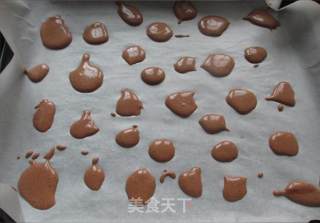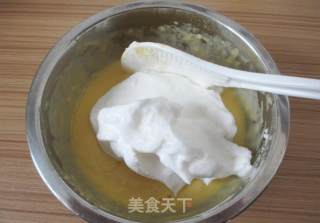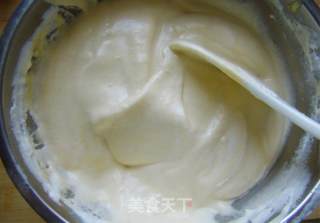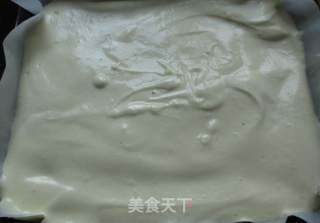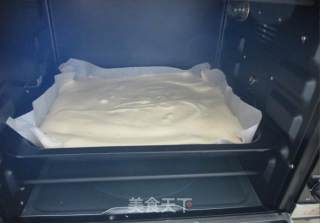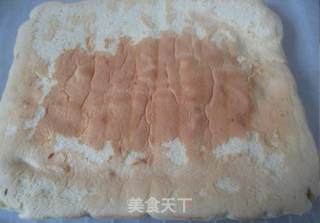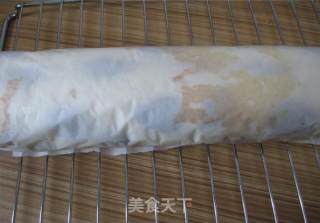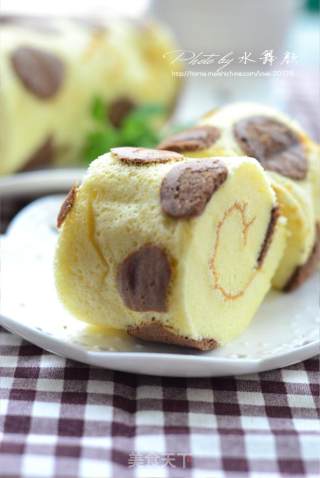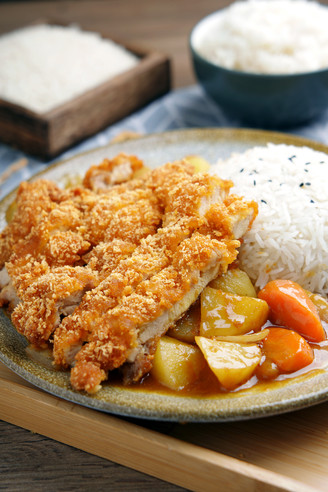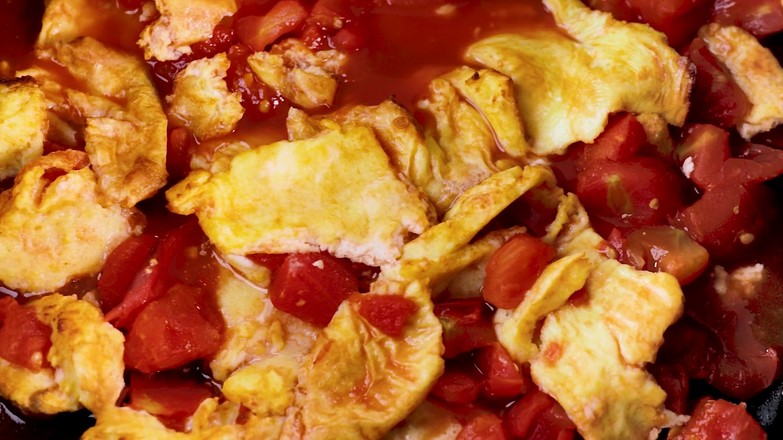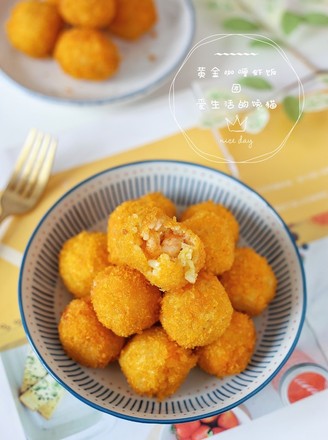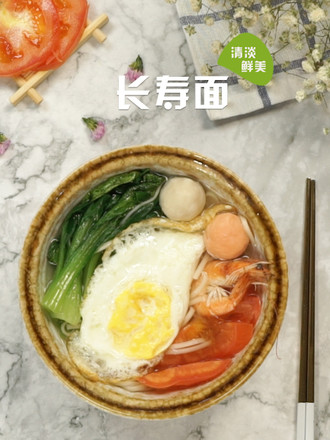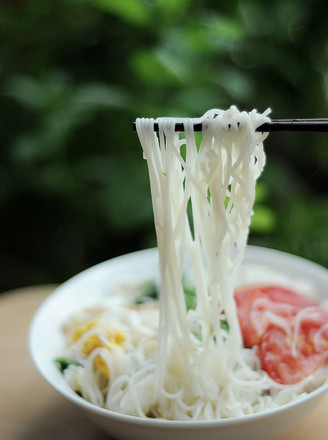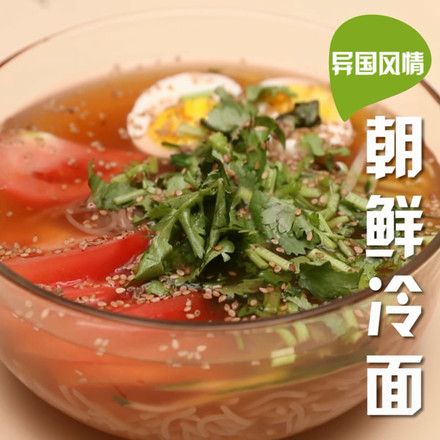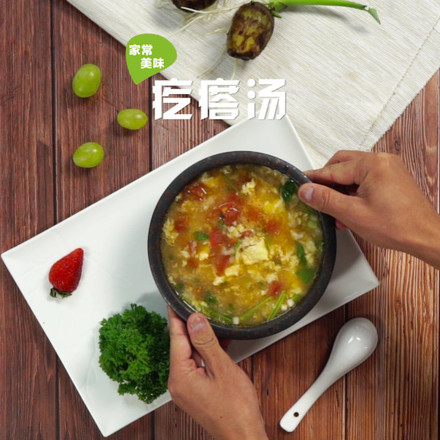Cow Pattern Chiffon Cake Roll
1.
Be prepared to weigh all the ingredients.
2.
Pour the egg whites and egg yolks into the egg-beating basin (Picture 2). The egg-beating basin must be free of water and oil. The pot for egg whites should be slightly larger.
3.
Put 1 gram of salt in the egg yolk bowl. The salt can make the sugar sweetness less greasy. Then add 10 grams of caster sugar. Whisk evenly with a manual whisk.
4.
Add 50 grams of salad oil in three portions, and use a manual whisk to beat evenly each time.
5.
Pour 65 grams of pure milk into the egg yolk bowl and beat evenly until the oil and water merge.
6.
Sift 80 grams of low flour into the egg yolk bowl. In a separate bowl, dig 3 scoops of milk paste and add the sifted cocoa powder.
7.
7: The egg whites are beaten with a whisk to the coarse foam state, and 1/3 sugar is added.
8.
8: Beat until fine foam, then add 1/3 sugar.
9.
Continue to beat until the egg whites are thicker and the surface becomes grainy. When the egg white peaks on the whisk are drooping, add the remaining fine sugar.
10.
Continue to beat, and the egg white peaks on the whisk are long and not upright, indicating that it has reached the level of wet foaming, that is, the level of nine times. To make chiffon cake rolls, just beat the egg whites to this level.
11.
Spread greased paper on the baking tray, use a spoon to drip the cocoa yolk paste onto the greased paper, and drip out irregular patterns at will. Put it in a 180℃ preheated oven, bake for one minute, and set the shape.
12.
Take one third of the whipped egg whites into the original egg yolk paste, and stir evenly with a rubber spatula. Be careful to stir up from the bottom, just like stir-frying, don't stir in circular motions to prevent the protein from defoaming. It can also be cut and mixed.
13.
Pour the mixed batter into the egg white bowl, and use the same method to stir and cut until the egg white and egg yolk paste are completely fused, and the mixed batter is relatively thick and uniformly light yellow.
14.
Pour the cut and mixed original cake batter onto the baked cocoa cake batter.
15.
Hold the bakeware with both hands and gently drop it several times to shake off large bubbles. Put it in the lower middle of the preheated oven and bake at 180 degrees for 21 minutes.
16.
Remove the baking tray from the oven. Holding the greased paper on both sides with both hands, take the cake out of the baking tray and place it on the cooling net. Carefully peel off the greased paper around it, spread a piece of greased paper on the other cold net, buckle the cake upside down on the new greased paper, and remove the original Oiled paper.
17.
Now the yellow side of the cake is facing up, spread the jam evenly on the surface of the cake. Roll the cake up and put it in the refrigerator for 30 minutes to set.
18.
Take out, cut and eat.
Tips:
1: The surface of the baked cake is light golden yellow. If you tap it with your fingers and leave a gravure on the surface of the cake, it means that the cake is not cooked. If you tap it with your fingers, the surface of the cake breaks, it means that the bake is too big, and it will break when rolled. Only by tapping with your fingers, the gravure left on the surface of the cake can quickly bounce back and return to its original shape, which means that the baking is just right.
2: Due to the different temperature at home, I make adjustments according to my own oven.

